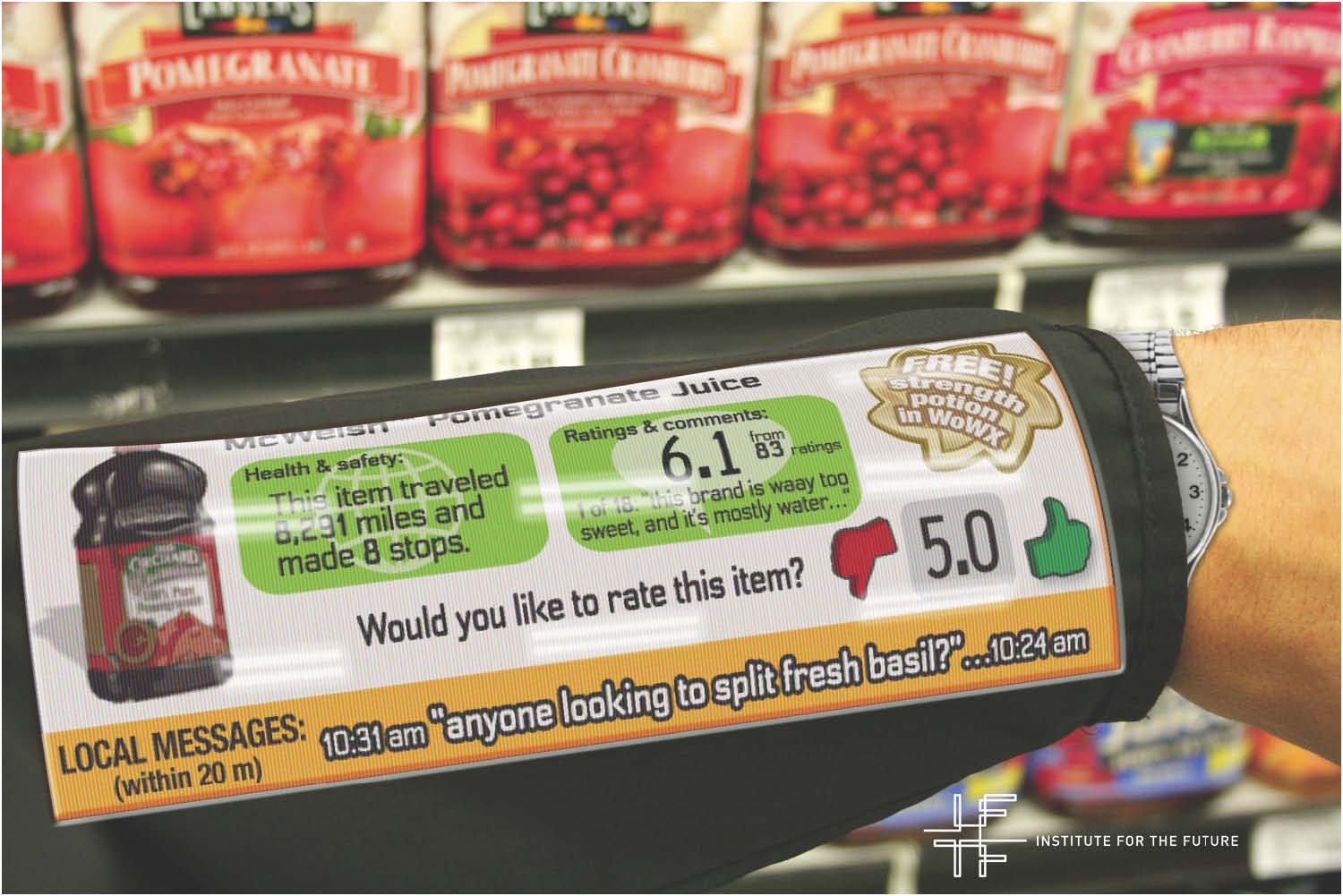Future Now
The IFTF Blog
How Products Are Shaping Social Networks
I'm not typically inclined to blog about evil genius, but it's hard to know how else to describe the redesign of an e-cigarette Blue Cigs. Specifically, the redesigned "smart packs" help e-cigarette smokers connect and socialize over doses of vaporized nicotine.
Before, e-cig packs were meant simply as a portable charging device for the glowing blue-tip devices. Now, when a fellow user is "vaping" (not smoking) within a 50-foot range, the Smart Pack will notify both parties, potentially prompting a social interaction. What's more, the company has designed the products for seamless integration with social networks like Facebook and Twitter, essentially making the Smart Pack the Foursquare check-in for the nicotine-addicted consumer.
"Customers were always telling us how social Blu e-cigs were--they'd be in a bar or outside, and someone would see this blue light and what looks like smoke," says the Australian-born Healy, who before developing the unlikely smokeless cigarettes ran his first business manufacturing basketball gear in China. "Quite often it sparks a conversation--I actually had a doctor who kept emailing me cause it kept getting him laid. So we started to develop the social aspect of it."
This is all sparking up as public smoking gets slowly extinguished as a social habit. Restaurants and bars around the globe have shooed second-hand fumes to the sidewalk, where cigarette-dependents stand cordoned off from the inside chatter, likely griping about the soaring cost of a pack.
"More and more smokers are becoming lepers," Healy says. "We're not just selling electronic cigarettes--we're selling freedom."
What is so innovative, although also troubling, about the Blue Cigs Smart Packs, is that they're finding a path to effectively remove some of the social stigma associated with smoking. Get a smart pack and instead of feeling isolated because you have to huddle outside by yourself to smoke, you can create an ad hoc social group wherever you are to meet people, feel popular, and relax.
This may sound trivial, but it turns out that social stigma was one of the major factors that drove rapid reductions in smoking rates in the 1980s and 1990s. For example, a study co-authored by Nicholas Christakis and James Fowler--whose work we cite a lot at the Institute--found that:
The researchers saw major shifts in smoking trends during the study period. Smoking prevalence dropped significantly, from 45% in the 1970s to 13% in 2002. In the 1970s, smokers and non-smokers mixed equally in their social networks; by 2000, smokers were more likely to be on the outskirts of social networks and were more likely to be clustered together.
"If you look back at 1971, smokers and non-smokers alike were at the centers of social networks," said co-author James H. Fowler, PhD, associate professor of political science at the University of California San Diego. "For people running companies and having parties, smoking was irrelevant. But during the '80s and '90s we saw a dramatic shift of smokers to the periphery of the social network. Contrary to what we might have thought in high school, smoking has become a supremely bad strategy for getting popular."
Whether a person quit smoking was largely shaped by social pressures, and people tended to quit smoking in groups. If a spouse quit smoking, the other spouse was 67% less likely to smoke. If a friend quit, a person was 36% less likely to still light up. Siblings who quit made it 25% less likely that their brothers and sisters would still smoke.
Beyond the specifics of the e-cigarette, though, there's a second element to the Smart Pack that I think will have more far reaching implications. As the creator of the Smart Pack told Fast Company:
"I look at these social and dating networks, and I think, why don't you just walk up and talk to some people instead of having to do it online? Our products have a great ice-breaker quality that our customer loves: People see their Packs flashing, the logo on the front lights up, it's very visible," Healy says. "In a dating sense, your Pack is laying the groundwork for you. It's almost like a little wing man, from a guy's perspective. You don't have to go up to a girl with a cheesy pick-up line. It's doing all the talking for you...
As far as I know, this is the first example of someone building geolocation-based social networking features into an everyday consumer good. Which is to say that the Smart Packs point toward a future where people are having ad-hoc interactions in physical space to discuss, well, whatever they might want to discuss. Want to share fresh basil, as we suggested a supermarket shopper might be asking in the middle of a store? As this artifact from the future depicts, it will be easy to find someone.

And this, I think, represents an increasingly important domain for the evolution of social networking--where finding people in physical spaces who share our interests is just as easy and practical, and potentially far more meaningful, than connecting at a computer.



